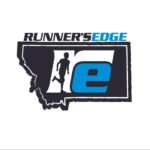Store Location
Store Hours
Friday | 10am - 6pm
Saturday | 10am - 5pm
Sunday | 11am - 4pm
Address
304 N Higgins
Missoula, MT 59802
T. 406.728.9297
The Latest from RE
 Understanding and Treating Plantar Fasciitis in RunnersMay 19, 2023 - 1:21 pm
Understanding and Treating Plantar Fasciitis in RunnersMay 19, 2023 - 1:21 pm The Mystery of Chronically Tight Hip FlexorsMay 3, 2023 - 11:21 am
The Mystery of Chronically Tight Hip FlexorsMay 3, 2023 - 11:21 am Georgia Death Race Recap – Eric KienleMarch 29, 2023 - 5:37 pm
Georgia Death Race Recap – Eric KienleMarch 29, 2023 - 5:37 pm Staying active and fit during middle-age and beyondMarch 7, 2023 - 12:59 pm
Staying active and fit during middle-age and beyondMarch 7, 2023 - 12:59 pm The Frozen Feet Challenge is BACK!January 31, 2023 - 1:39 pm
The Frozen Feet Challenge is BACK!January 31, 2023 - 1:39 pm



Understanding and Treating Plantar Fasciitis in Runners
The Mystery of Chronically Tight Hip Flexors
Georgia Death Race Recap - Eric Kienle
Staying active and fit during middle-age and beyond
The Frozen Feet Challenge is BACK!
Utilizing Cross Training for Winter Running Training